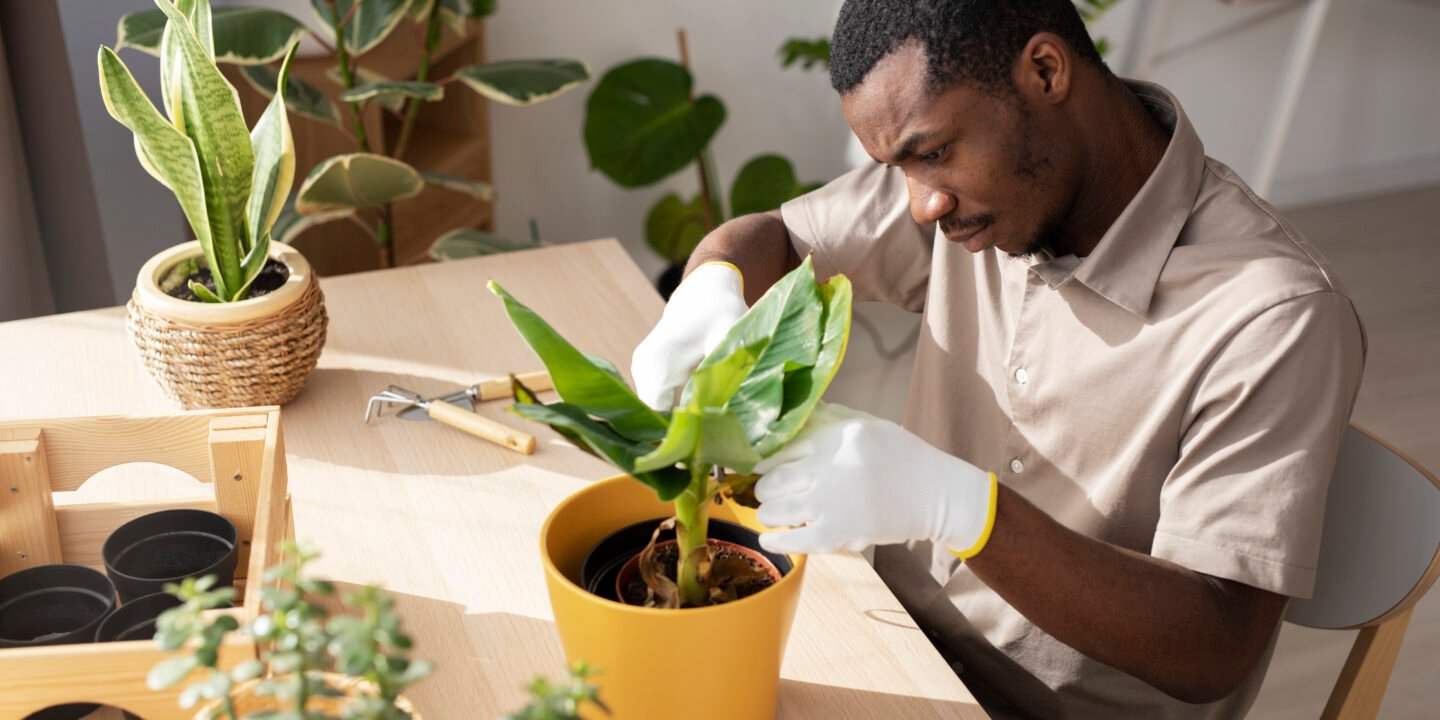
Gardening is a rewarding and therapeutic hobby that brings you closer to nature while beautifying your outdoor space. Whether you have a sprawling backyard, a cozy balcony, or even just a windowsill, DIY gardening offers endless possibilities for cultivating plants and creating a lush, green oasis. In this blog post, we’ll explore various DIY gardening ideas, tips for beginners, and ways to make the most of your green thumb.
Why DIY Gardening?
DIY gardening is popular for several reasons:
- Therapeutic Benefits: Gardening reduces stress, improves mood, and provides a sense of accomplishment.
- Sustainable Living: Growing your own fruits, vegetables, and herbs promotes self-sufficiency and reduces your carbon footprint.
- Aesthetic Appeal: Plants enhance the beauty of your space, adding color, texture, and life.
- Educational: Gardening teaches patience, responsibility, and a deeper understanding of nature.
Getting Started with DIY Gardening
- Assess Your Space
- Determine the available space for your garden. Whether it’s a backyard, balcony, or windowsill, understanding your space will help you choose the right plants and layout.
- Understand Your Climate
- Research your local climate and growing conditions. Knowing your hardiness zone will help you select plants that thrive in your area.
- Choose Your Plants
- Decide what you want to grow based on your space, climate, and personal preferences. Consider a mix of ornamental plants, vegetables, herbs, and flowers to create a diverse garden.
- Gather Tools and Supplies
- Essential gardening tools include gloves, a trowel, pruners, a watering can or hose, and a spade. Depending on your projects, you may also need pots, soil, compost, and seeds or seedlings.
DIY Gardening Projects
- Container Gardening
- Ideal for small spaces, container gardening allows you to grow plants in pots, planters, or even repurposed containers. Use a variety of sizes and shapes to create an interesting and dynamic garden.
- Vertical Gardens
- Maximize limited space with vertical gardening. Use wall-mounted planters, hanging baskets, or trellises to grow climbing plants, herbs, and flowers. This method is perfect for balconies or small patios.
- Raised Bed Gardening
- Raised beds offer better control over soil quality and drainage. Build your own raised beds using wood, bricks, or recycled materials. They are excellent for growing vegetables and can reduce strain on your back by elevating the garden.
- Herb Gardens
- Grow a variety of herbs in a dedicated herb garden or mixed in with other plants. Herbs like basil, mint, rosemary, and thyme are easy to grow and add fresh flavors to your cooking.
- Composting
- Create your own compost to enrich your garden soil. Composting kitchen scraps, yard waste, and other organic materials reduces waste and provides nutrient-rich soil for your plants.
- DIY Garden Decor
- Enhance your garden with handmade decorations. Create garden markers, wind chimes, stepping stones, or bird feeders to add a personal touch to your outdoor space.
Tips for Successful DIY Gardening
- Start Small
- If you’re new to gardening, begin with a small project to build your skills and confidence. You can always expand your garden as you become more experienced.
- Research and Plan
- Take time to research the plants you want to grow and plan your garden layout. Consider factors like sunlight, water requirements, and plant compatibility.
- Practice Patience
- Gardening requires patience and persistence. Not every plant will thrive, but learning from your experiences is part of the journey.
- Use Quality Soil
- Invest in good-quality soil and compost. Healthy soil is the foundation of a successful garden and will support strong, vibrant plants.
- Water Wisely
- Water your plants appropriately, considering the needs of each species. Overwatering and underwatering can both be detrimental to plant health.
- Regular Maintenance
- Keep your garden in top shape with regular maintenance. Prune dead or overgrown plants, remove weeds, and monitor for pests and diseases.
Sustainable Gardening Practices
Incorporate sustainable practices into your gardening routine to promote environmental health:
- Rainwater Harvesting
- Collect rainwater in barrels to use for watering your garden. This conserves water and reduces your utility bills.
- Organic Gardening
- Avoid chemical pesticides and fertilizers. Use organic alternatives and natural pest control methods to maintain a healthy garden ecosystem.
- Native Plants
- Choose native plants that are adapted to your local climate and soil conditions. They require less water and maintenance and support local wildlife.
- Permaculture
- Implement permaculture principles by creating a self-sustaining garden that mimics natural ecosystems. Focus on diversity, soil health, and resource efficiency.
Conclusion
DIY gardening is a fulfilling and creative way to enhance your living space while connecting with nature. Whether you’re growing vegetables, cultivating flowers, or creating a vertical garden, there are endless possibilities to explore. With a little planning, patience, and care, you can transform any space into a green haven. So, grab your tools, get your hands dirty, and start your gardening adventure today!







